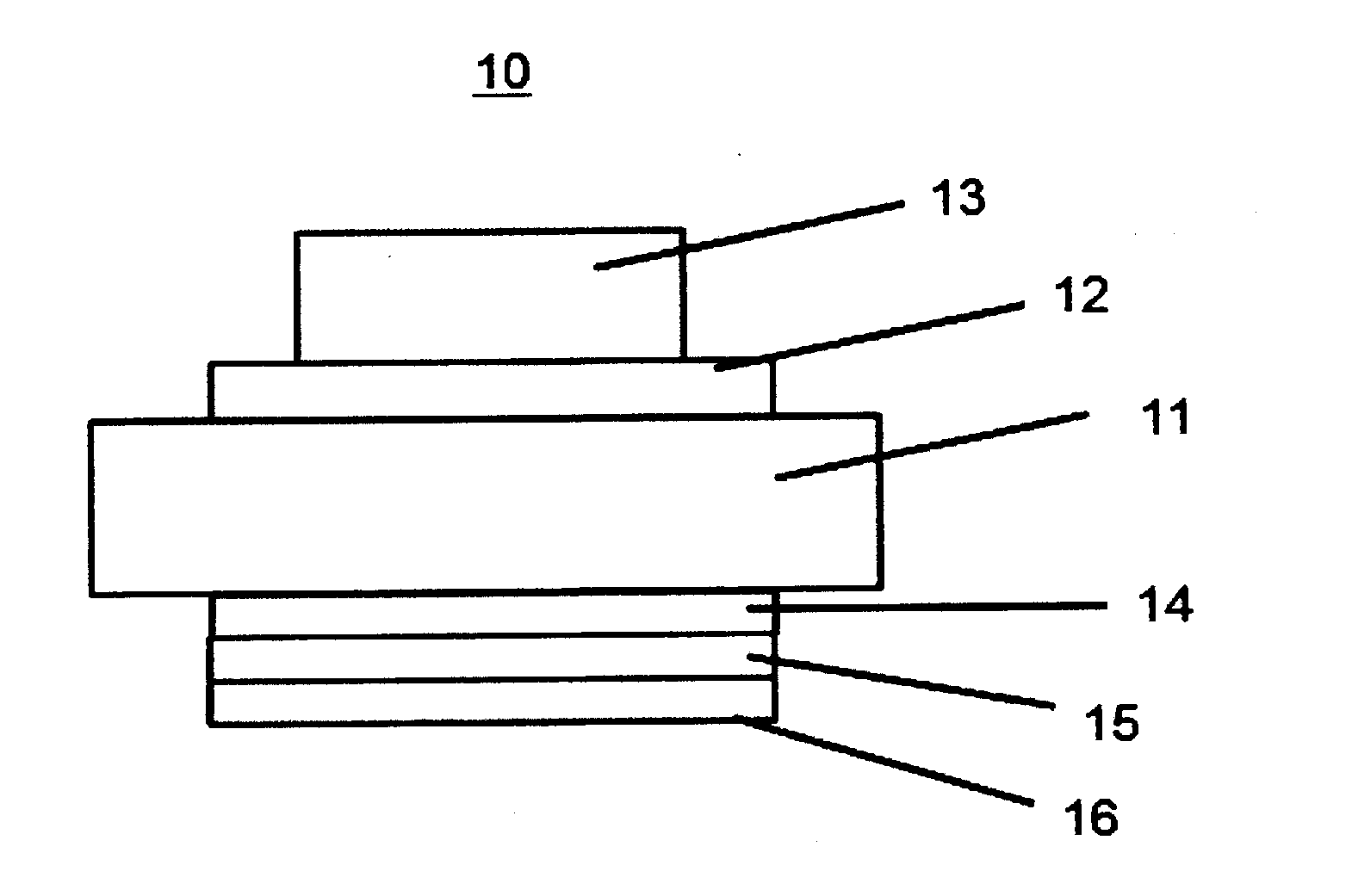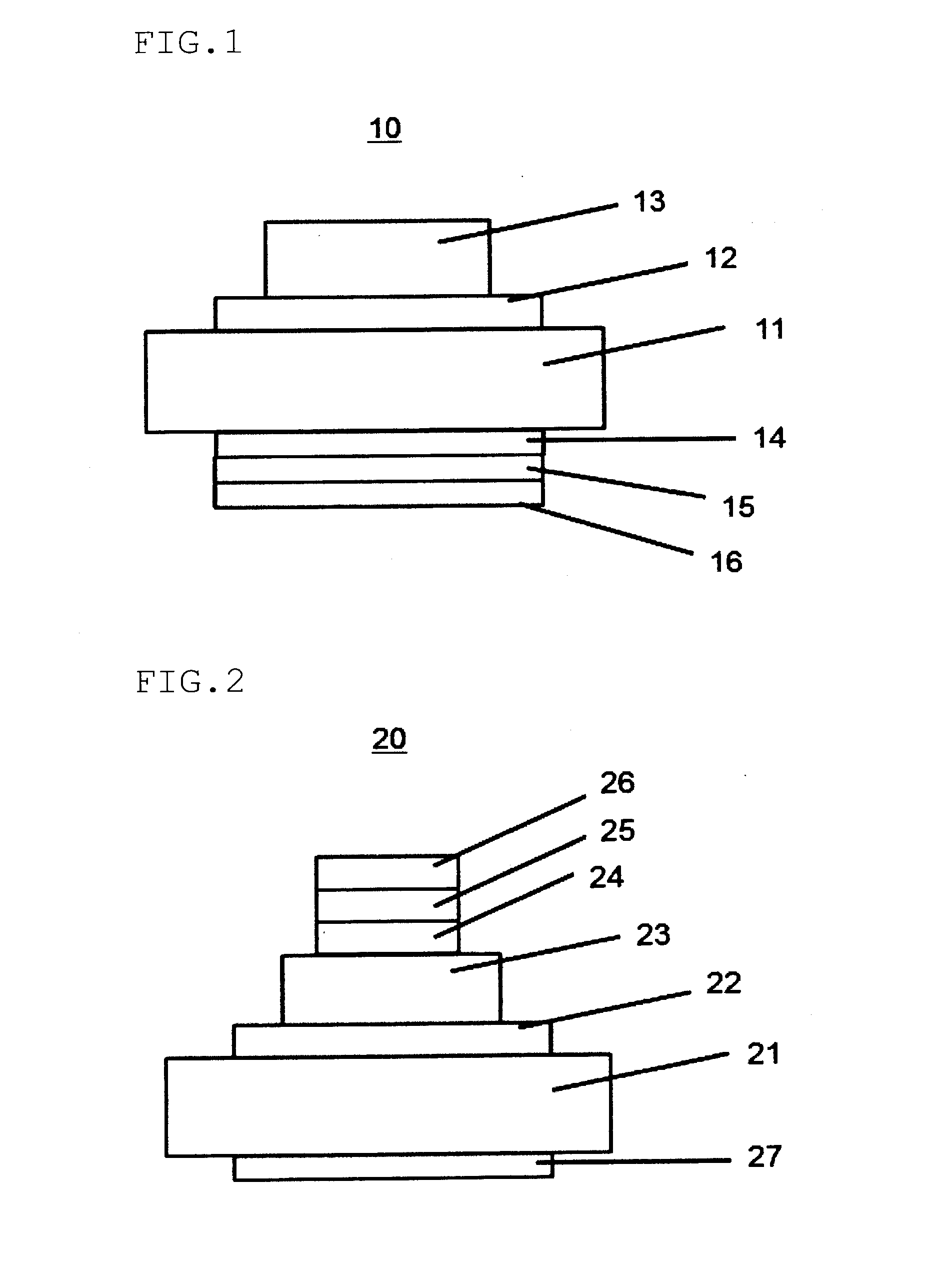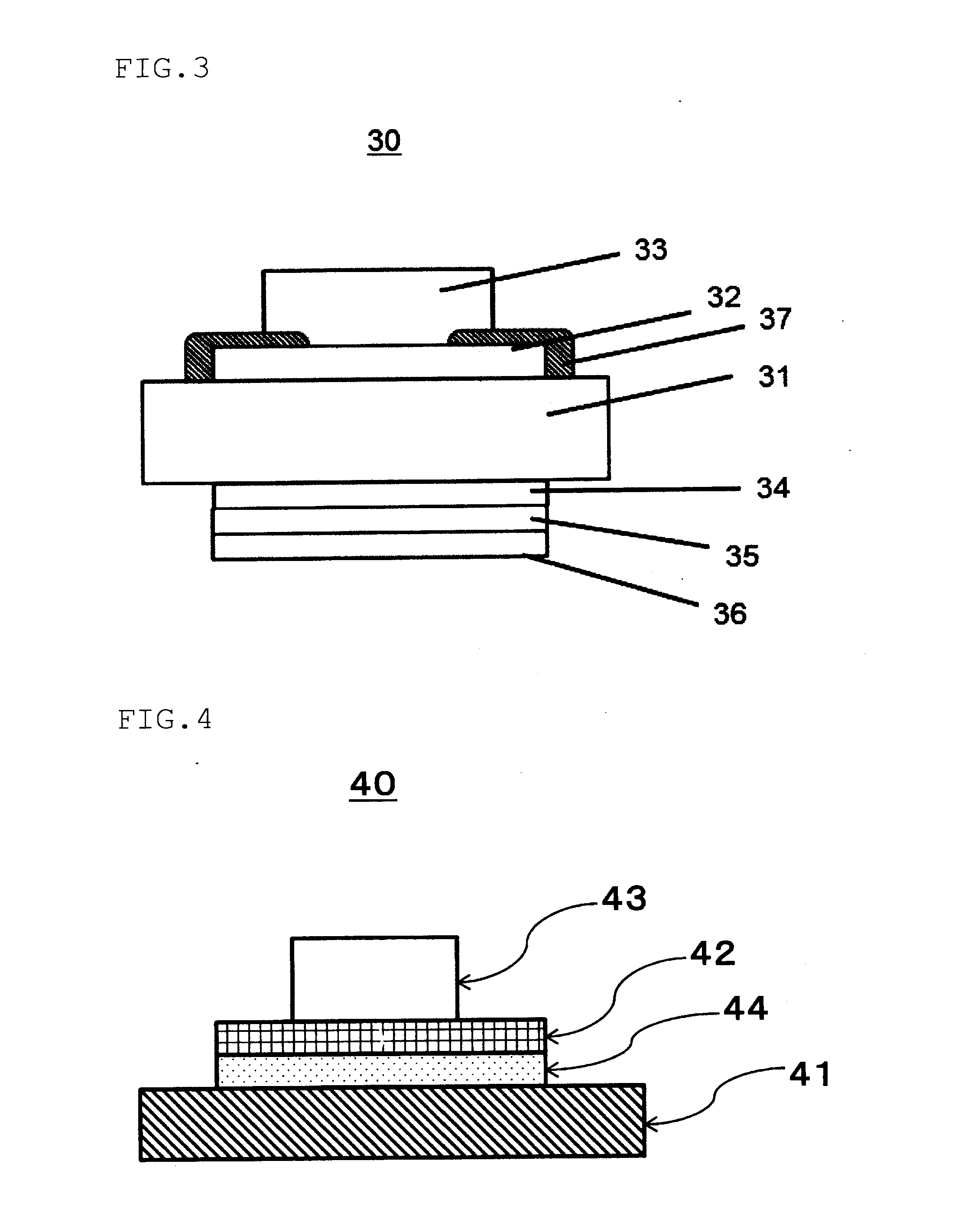Oxide semiconductor substrate and schottky barrier diode
a technology of schottky barrier and semiconductor substrate, which is applied in the direction of basic electric elements, electrical equipment, semiconductor devices, etc., can solve the problems of sic from the viewpoint of mass productivity and cost, mass productivity, and difficult to obtain a crystal with a small number of dislocations, and achieve high mass productivity, excellent current-voltage characteristics, and low cost
- Summary
- Abstract
- Description
- Claims
- Application Information
AI Technical Summary
Benefits of technology
Problems solved by technology
Method used
Image
Examples
example 1
[0129]FIG. 1 is a cross-sectional view schematically illustrating a Schottky barrier diode element obtained in Example 1.
[0130]An n-type silicon (Si) substrate 11 having a resistivity of 0.02 Ω·cm was provided, and treated with diluted hydrofluoric acid to remove a natural oxide film from the surface of the substrate. The Si substrate (wafer) was placed in a sputtering device (“HSM552” manufactured by Shimadzu Corporation). A sputtering discharge was effected at an RF power of 100 W using a Ga2O3 sintered body including 500 ppm of Si (this composition is hereinafter referred to as “Si—Ga2O3”) as the sputtering target to form an Si—Ga2O3 film (gallium oxide film) 12 having a thickness of 300 nm on the surface of the Si substrate from which an oxide film was removed.
[0131]The Si—Ga2O3 film was patterned by photolithography to form the desired pattern, and annealed at 500° C. for 0.5 hours in nitrogen to effect crystallization. The crystal state of the Si—Ga2O3 film was determined by X...
examples 2 and 3
[0145]A Schottky barrier diode element was produced using a sputtering method in the same manner as in Example 1, except that the Schottky electrode and the semiconductor composition were appropriately changed as shown in Table 1. The measurement results for the current-voltage characteristics are shown in Table 1.
example 4
[0146]An n-type Si substrate having a resistivity of 0.02 Ω·cm was provided, and treated with diluted hydrofluoric acid to remove a natural oxide film from the surface of the substrate. The Si substrate (wafer) was placed in a sputtering device (“HSM552” manufactured by Shimadzu Corporation). Ga2O3 was used as the sputtering target. A sputtering discharge was effected at an RF power of 100 W to form a gallium oxide film having a thickness of 300 nm on the surface of the Si substrate from which an oxide film was removed.
[0147]The Si substrate (wafer) on which the gallium oxide film was formed was placed in an ion doping implantation device, and doped with Si at a concentration of 0.5 at %. The Si substrate was then annealed at 500° C. for 1 hour in air to activate Si and form a polycrystalline Ga2O3 film. The polycrystalline Ga2O3 film was patterned by photolithography to form the desired pattern. The substrate was placed in the sputtering device, and sputtering was performed using a...
PUM
 Login to View More
Login to View More Abstract
Description
Claims
Application Information
 Login to View More
Login to View More - R&D
- Intellectual Property
- Life Sciences
- Materials
- Tech Scout
- Unparalleled Data Quality
- Higher Quality Content
- 60% Fewer Hallucinations
Browse by: Latest US Patents, China's latest patents, Technical Efficacy Thesaurus, Application Domain, Technology Topic, Popular Technical Reports.
© 2025 PatSnap. All rights reserved.Legal|Privacy policy|Modern Slavery Act Transparency Statement|Sitemap|About US| Contact US: help@patsnap.com



